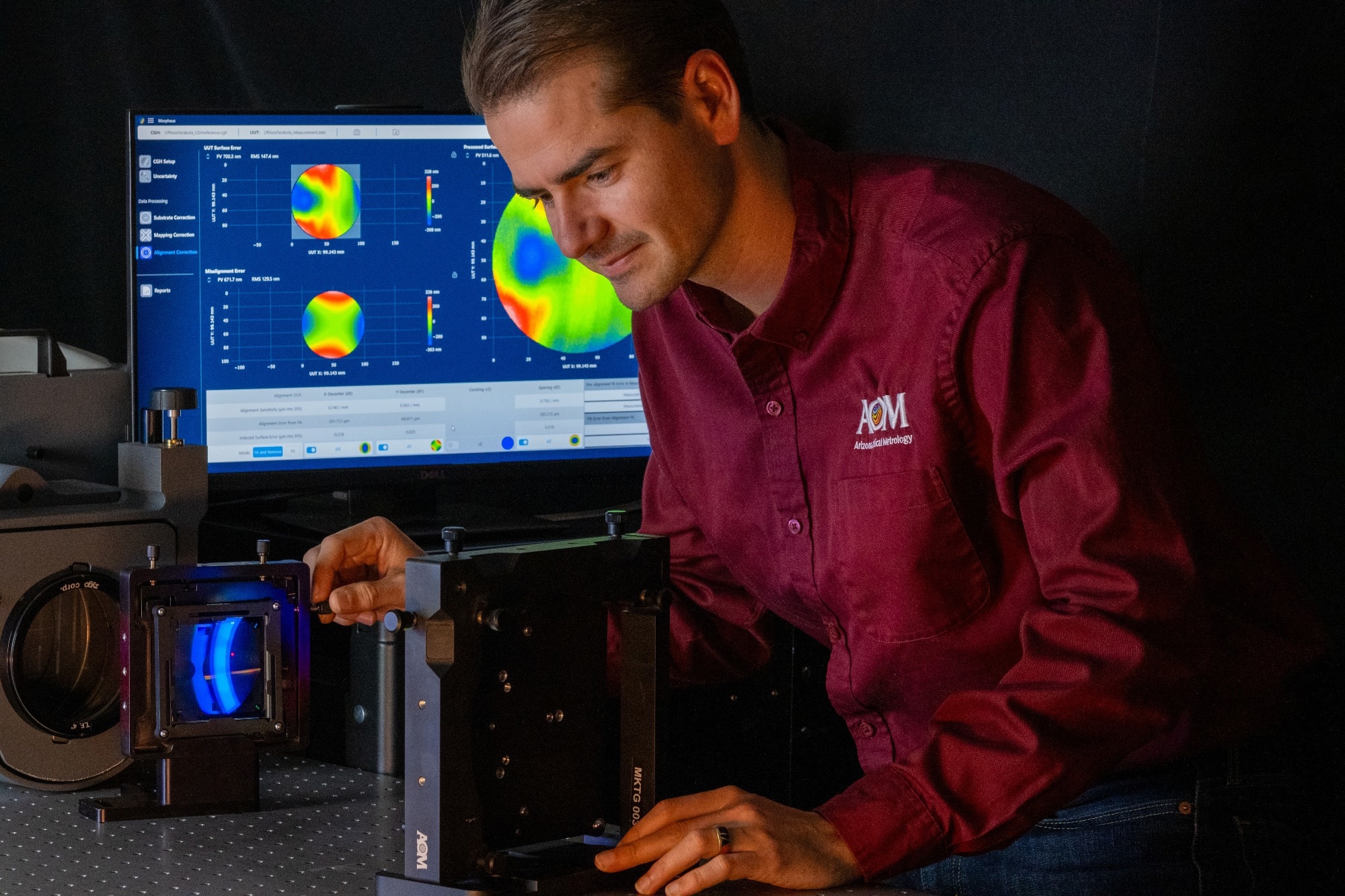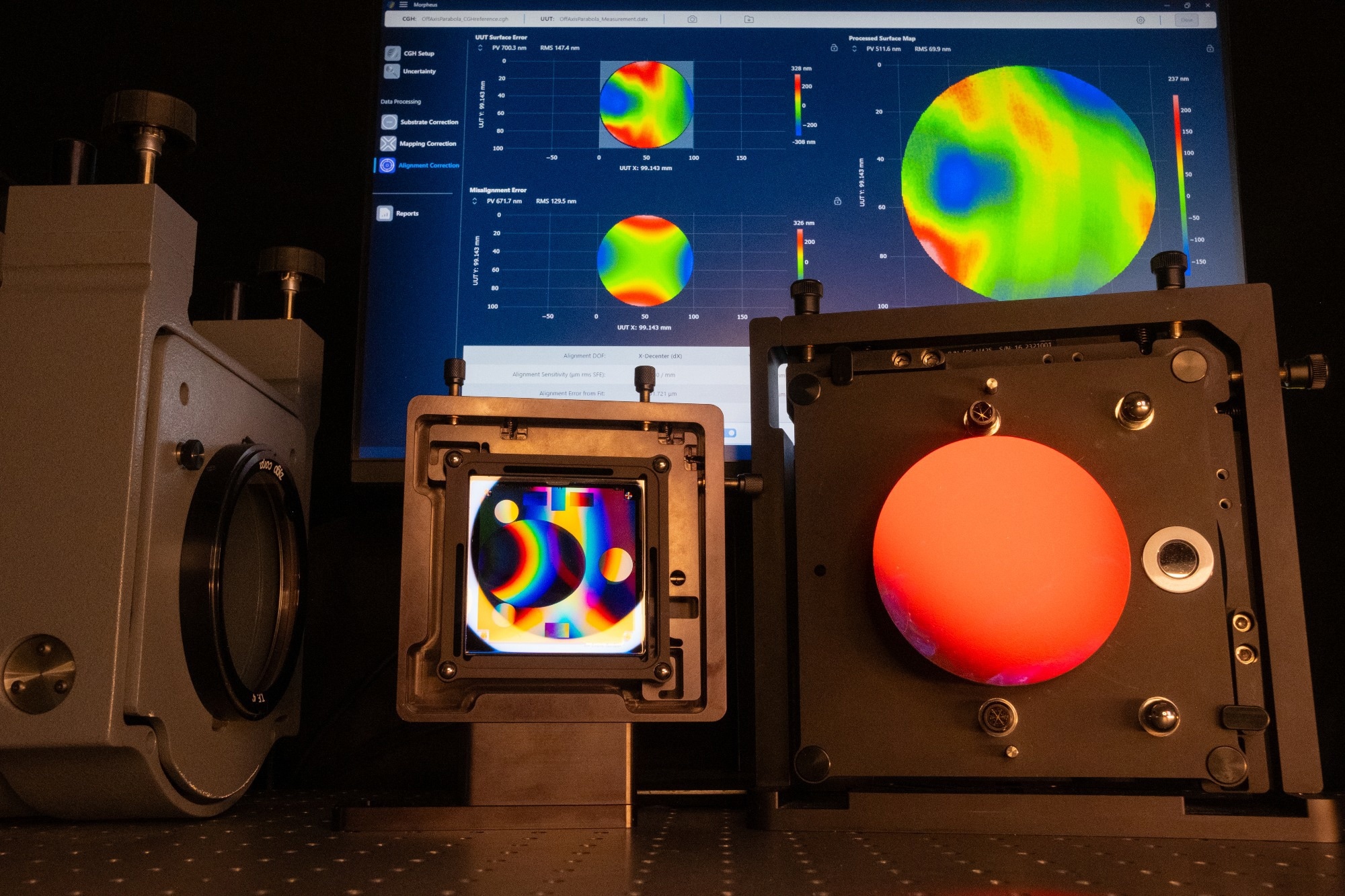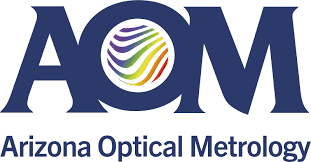In this interview, AZoOptics talks to Dr. Logan Rodriguez Graves about Morpheus™, which offers fast, automated CGH data correction for greater accuracy and efficiency.
Can you start by giving us an overview of Morpheus™ and what inspired its development?
The Morpheus software transforms raw data from a CGH test into refined results in just a few clicks. Feedback from Morpheus can be used to verify an optical component surface or to guide further manufacturing.
The data refinement process traditionally required hours or days of coding and analysis by the user. We developed Morpheus to give our customers a simple, reliable solution for processing CGH metrology results, saving an enormous amount of expensive development time.
Why is additional data processing necessary for CGH-based interferometric measurements, and what specific challenges does Morpheus address?
Measuring a surface with a CGH is only the first step for measuring an optical surface. Turning that measured data into a precise surface map requires calibration, correction of mapping distortion, and identification and removal of errors due to misalignment.
Before Morpheus, each step required custom software, which the customer needed to develop or farm out. Morpheus provides a turnkey solution to all of this processing and guarantees quality results. It includes robust documentation so our customers can understand what’s happening in the software and confidently process their data.
Can you walk us through how the software corrects the measurement data?
Morpheus is designed to correct three major measurement errors: substrate error, mapping distortion, and alignment error.
To correct for substrate error, we need to bring the raw measurement data and the substrate error map into the same domain.
AOM provides factory qualification for substrate error, but it can also be qualified in situ. Fiducials are added to the CGH substrate error map as well as the measurement map. Morpheus automatically registers the two maps and subtracts the substrate error from the measurement data.
This process has an additional benefit in that it corrects for distortion between the CGH substrate and the detector, which can occur if the setup includes a fast transmission sphere, for instance.
The second step in the Morpheus data refinement pipeline is to correct the data mapping from the CGH domain to the test optic domain. The curvature of an aspheric optical surface varies across the optic.
In a CGH test, this means that a regular grid of points on the optical surface maps to an irregular grid at the plane of the CGH. The plane of the CGH is what the interferometer sees; thus, the measurement is distorted. During CGH design, we know the mapping of the optical surface to the CGH in great detail, so the correction can be applied to the measurement data, providing an accurate representation of the surface error map.
The third step for Morpheus is to address misalignment modes between the test optic and the CGH. Misalignments such as decenter, despacing, and clocking can be challenging to remove because they can masquerade as real surface figure errors. Further, because the modes are unique to the design and are not simple Zernike modes or other polynomials, they are not straightforward to remove.
Morpheus can fit the particular modes of misalignment for the specific test in the measurement data. It can report how much misalignment is present and the contribution to each alignment mode's measurement map. The customer can remove these misalignment modes from the final data to obtain the true surface figure error.

Image Credit:Arizona Optical Metrology LLC
How does Morpheus streamline the workflow for metrology and deterministic polishing applications?
One of Morpheus's strengths is that it automates the data reduction process. With Morpheus, a technician on the fabrication floor can load in the measurement of an optic, and in just a few clicks, measurement data is corrected automatically. Operators can use the output data map from Morpheus to guide the next steps in fabrication. It represents a huge savings in time and expense regarding software development time and valuable polishing system hours.
The software uses a .cgh file for correction data. What kind of information is stored in the .cgh file?
The .cgh file holds the entire CGH metrology test in a digital format, including the test geometry, alignment modes and sensitivities, distortion correction coefficients, and key parameters about the design and as-built CGH. Storing all of the data in a single file enhances the accuracy of CGH measurements and allows Morpheus to perform all the essential corrections without further intervention.
How does Morpheus integrate with existing interferometry systems?
Morpheus integrates easily with a variety of existing interferometry systems. It can support .dat, .datx, and .4D files; we’re always adding more support.
How does it ensure a seamless user experience for manufacturers and engineers?
We made it really easy to use – the operator only needs to select the .cgh file and the measurement data file that they want to correct, and the software does the rest. Clean and clear analysis views let the user review details about the correction steps if desired.

Image Credit:Arizona Optical Metrology LLC
What are some real-world applications where Morpheus has significantly improved optical metrology processes?
Morpheus has been particularly impactful in environments where deterministic polishing is used to manufacture high-precision freeform and aspheric optics. In these workflows, accurate feedback is essential to converge on deterministic polishing steps. Morpheus enables users to quickly and reliably extract surface figure error from CGH-based measurements, even in the presence of alignment errors, which improves the efficiency of polishing iterations and reduces overall cycle time.
Beyond data correction, Morpheus also includes features like uncertainty analysis and report generation. How do these capabilities help?
These tools support traceability and quality control by helping teams understand the confidence level of each measurement. The built-in uncertainty analysis quantifies the effect of all CGH-related errors, which is crucial in high-stakes production environments. Automated report generation ensures consistent documentation, whether for internal quality systems, customer deliverables, or regulatory compliance.
Are there any upcoming updates or new features planned for Morpheus to further enhance its optical metrology capabilities?
We’re actively working on new features all the time, and updates are released every few months. Bug fixes are available more regularly as required. Soon, we will have new features that allow for the morphing of user-defined fiducials, critical for stitching and calibrating measurement data in multi-orientation testing.
About Dr. Logan Rodriguez Graves
Dr. Logan Rodriguez Graves is a Software Systems Engineer at AOM, where he manages software systems, including Morpheus™, AOM’s powerful CGH data processing software. Logan brings a unique blend of optical and software expertise to the team. He began his career researching autofluorescent imaging for early cancer detection before pivoting to optical metrology, earning his PhD from the University of Arizona's Wyant College of Optical Sciences with a focus on freeform surface measurement. Prior to joining AOM, he co-founded ELE Optics, a startup focused on cloud-based optical design tools.

This information has been sourced, reviewed and adapted from materials provided by AOM - Arizona Optical Metrology LLC.
For more information on this source, please visit AOM - Arizona Optical Metrology LLC.
Disclaimer: The views expressed here are those of the interviewee and do not necessarily represent the views of AZoM.com Limited (T/A) AZoNetwork, the owner and operator of this website. This disclaimer forms part of the Terms and Conditions of use of this website.